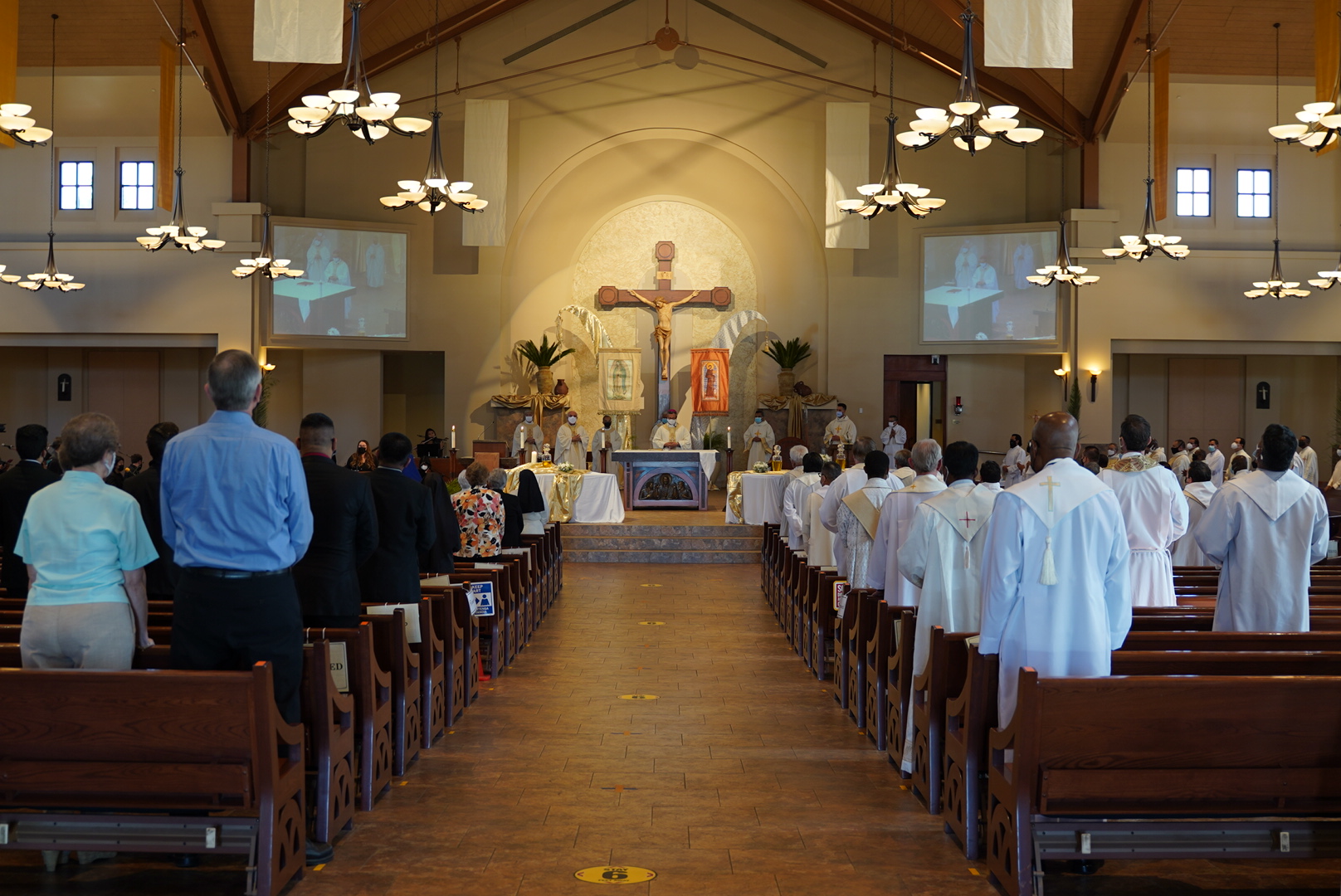By Anneliese Esparza
SAN BERNARDINO—After months of online Masses or Masses with limited capacity, Catholics in the Diocese are now able to worship as a full congregation.
In a June 16 letter, Bishop Alberto Rojas announced the removal of nearly all COVID-19 restrictions for all sacramental, liturgical and worship activities. In the same letter, he announced the lifting of the general dispensation from the Sunday and Holy Day Mass obligation that had been in place since the start of the pandemic.
According to canon law, “On Sundays and other holy days of obligation, the faithful are obliged to participate in the Mass ... unless excused for a serious reason (for example, illness, the care of infants) or dispensed by their own pastor. Those who deliberately fail in this obligation commit a grave sin.”
The general reinstatement of the Sunday Mass obligation, which began on July 1, does not include the elderly (65 years and older) or those with sickness or disabilities.
According to the new reopening guidelines, “Parishes may continue to offer sacraments, liturgies and worship services indoors, without any COVID protocol restrictions, if indoor seating is 5,000 or less.”
Parishioners are encouraged but not required to keep a three-foot social distance from others, and masks are no longer required for vaccinated people.
If a parish is located in an area with a low vaccination rate, the pastor, administrator or pastoral coordinator of that parish can choose to continue with stricter requirements at their discretion. The Diocese sends to parishes a weekly list of which parishes are located in high-risk areas to help them make their decision.
A parish is defined as high-risk if it is located in a zip code where the vaccination rate is lower than the county average. Riverside County currently does not have any high-risk parishes, while nearly half of the parishes in San Bernardino County are high-risk.
While the restrictions have been relaxed, the Bishop encouraged the faithful to remain mindful of safety, writing, “... let us continue to remember our responsibility in caring for and protecting one another – using sensible public health precautions in each of our parishes, always mindful of the health, safety and well-being of our parishioners, our clergy, staff and volunteers.”
In the wake of the changes, some parishes are seeing many of their parishioners returning while many others are still experiencing low Mass attendance.
St. Joseph in Upland is one of the parishes that is having “about the same attendance as pre-pandemic levels,” according to office administrator Christina Berry.
She said that her parish communicated the news about the full reopening of church on social media, bulletins, the parish website and bulletin boards, which seems to have reached most people.
“Those who want to wear a mask still do and those who didn’t want to wear them feel more comfortable ... all in all we have been blessed to have most parishioners return,” said Berry.
Similarly, St. Kateri Tekakwitha Parish in Beaumont-Banning is “almost at 100 percent capacity without distancing,” said the church’s pastor, Fr. Dennis Legaspi.
“Some [parishioners] are still reluctant, of course, especially with the increase in the cases of the Delta variant, but those who are hesitant come to church wearing a mask,” said Fr. Legaspi.
On the other hand, staff from several other parishes across the Diocese told the BYTE that their church’s Mass attendance did not significantly increase after the dispensation was lifted.
Lucy Reyes, a secretary at St. Mary in Fontana, said that many parishioners are still staying away from Mass. “We have announced that we are open in different ways; it seems that people are not ready to come back,” she said.
At St. Patrick in Moreno Valley, attendance is about half of what it was in summer 2019. Business manager Holly McCann said that attendance started to increase this year at Easter but has since leveled off.
“Declined Mass attendance is due to health concerns and [because of] those families who have not returned because attending Mass was a habit, not a fulfillment of obligation or desire to receive the Eucharist,” said McCann.
Declining Mass attendance has been an ongoing concern for the Church for decades, and it appears that the pandemic has worsened the problem – in a September 2020 study from the Center for Applied Research in the Apostolate, 36 percent of Catholics ages 18-35 said that they planned to attend Mass less frequently after stay-at-home orders were lifted.
To read the Bishop’s letter and the newest guidelines, click here.
Anneliese Esparza is the Managing Editor of the Inland Catholic BYTE.


